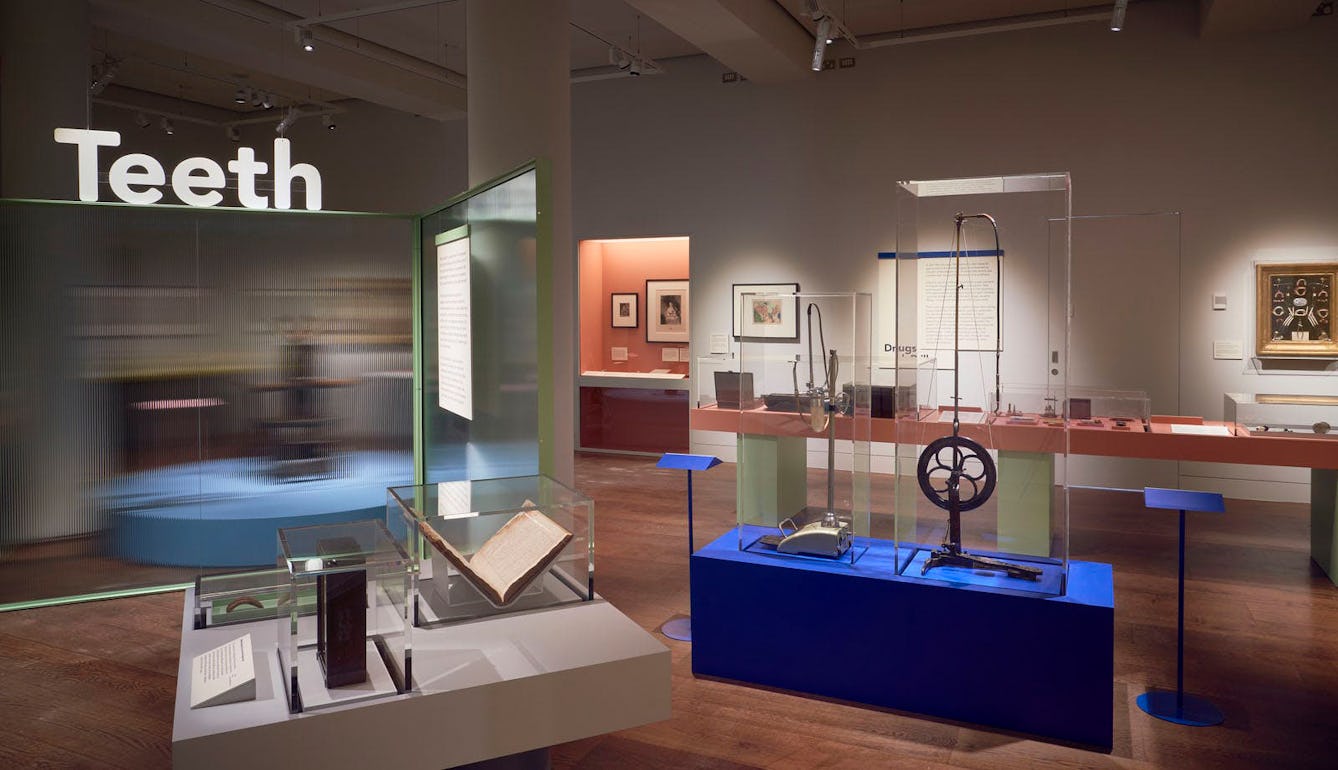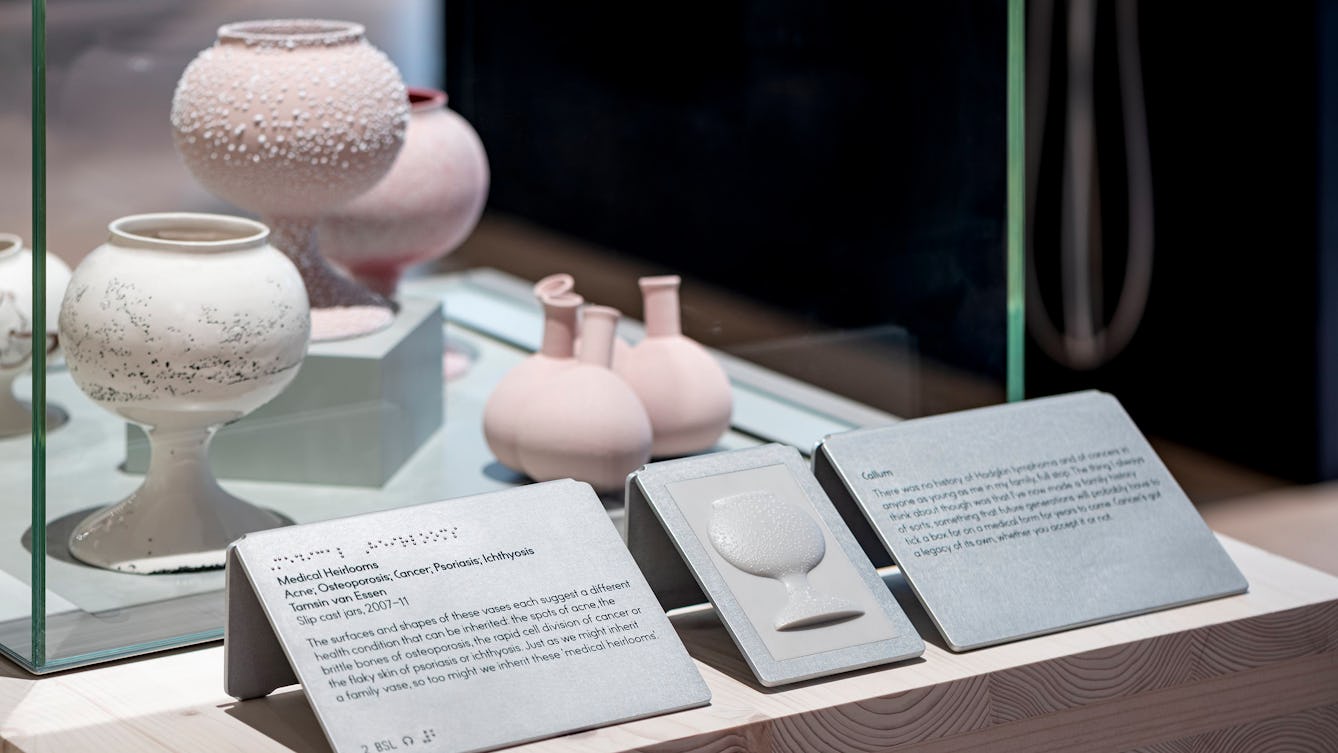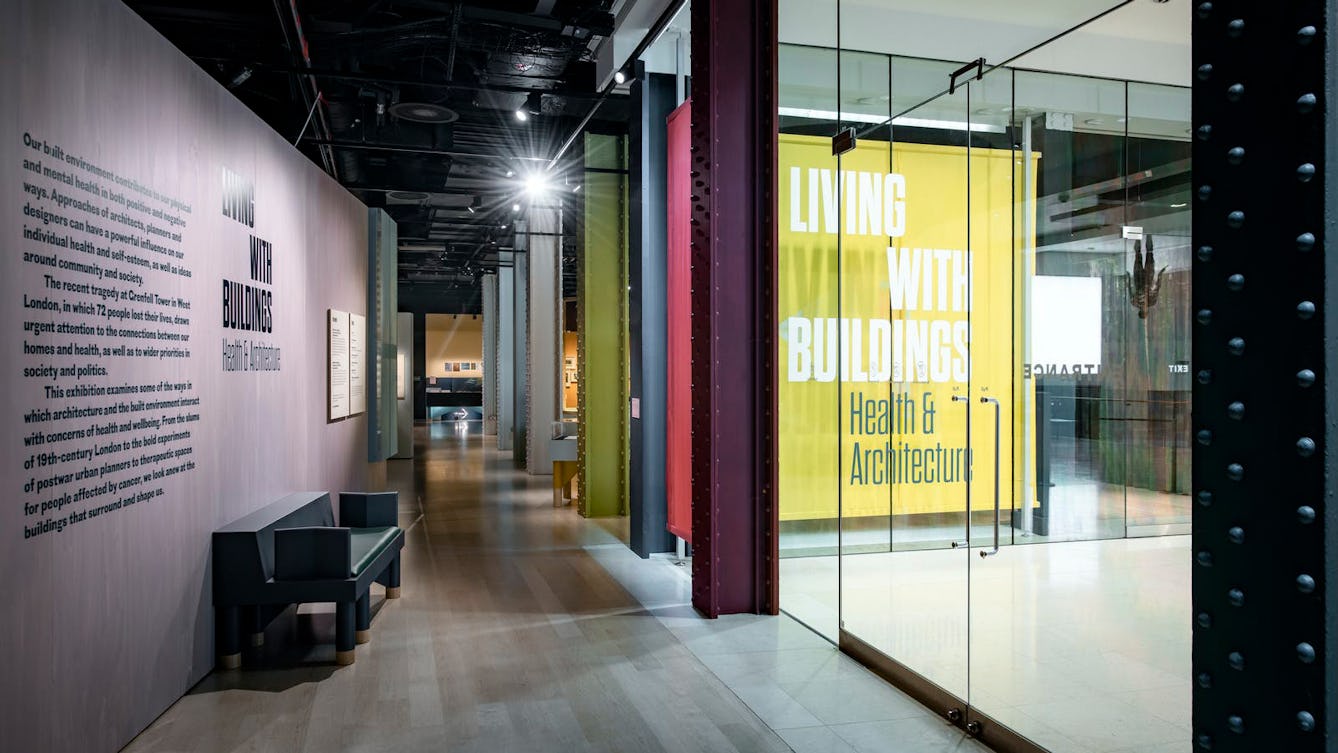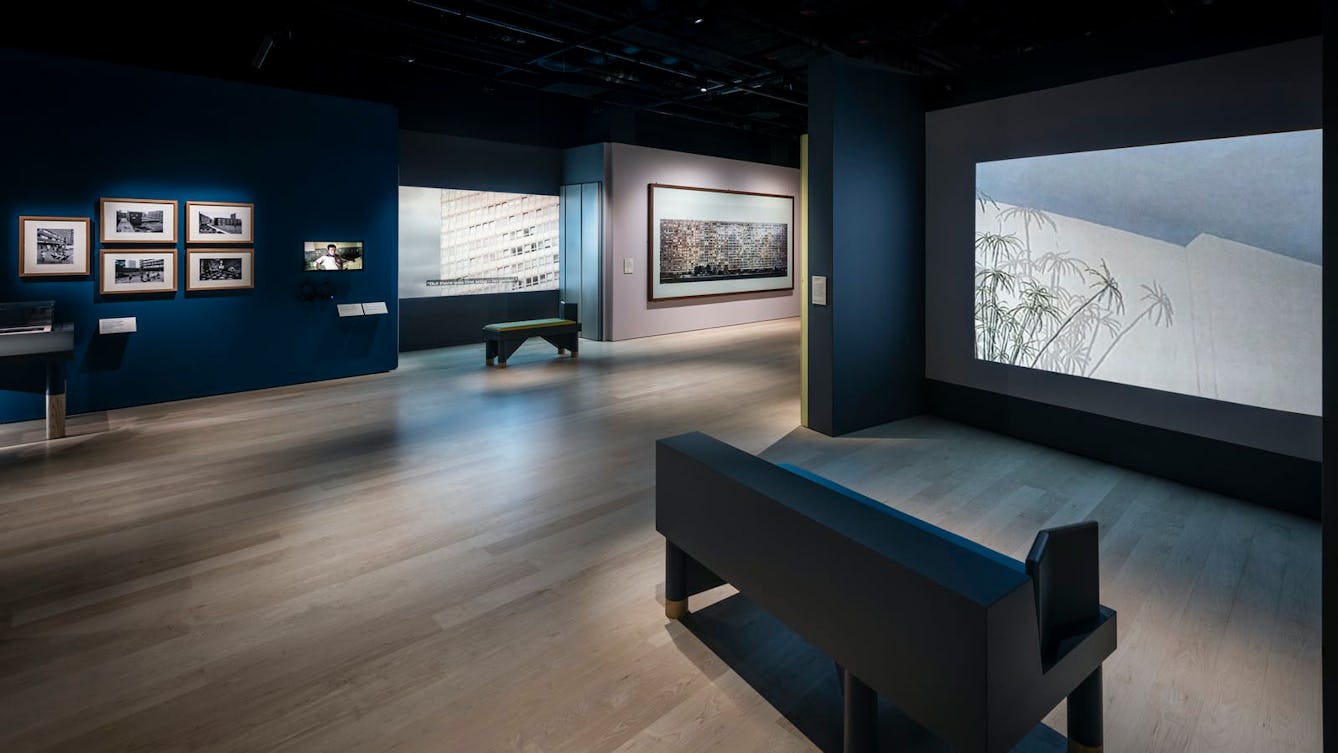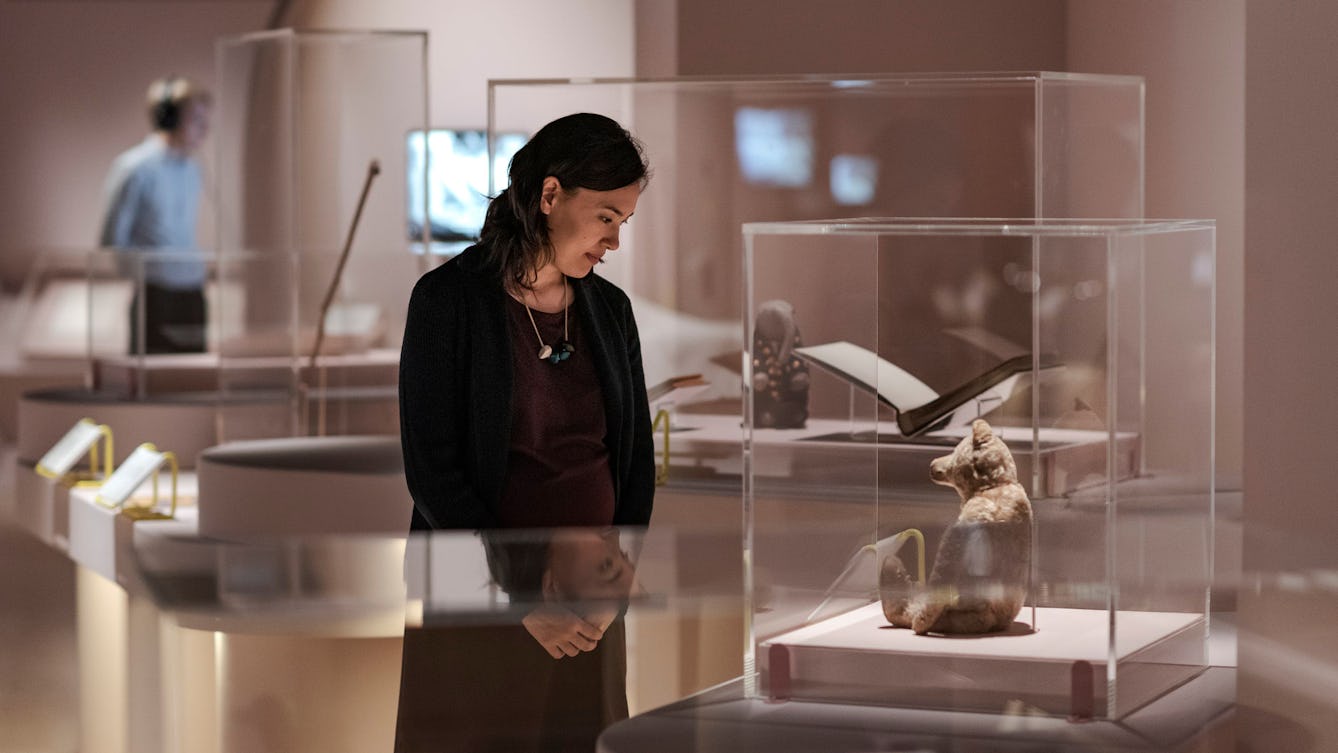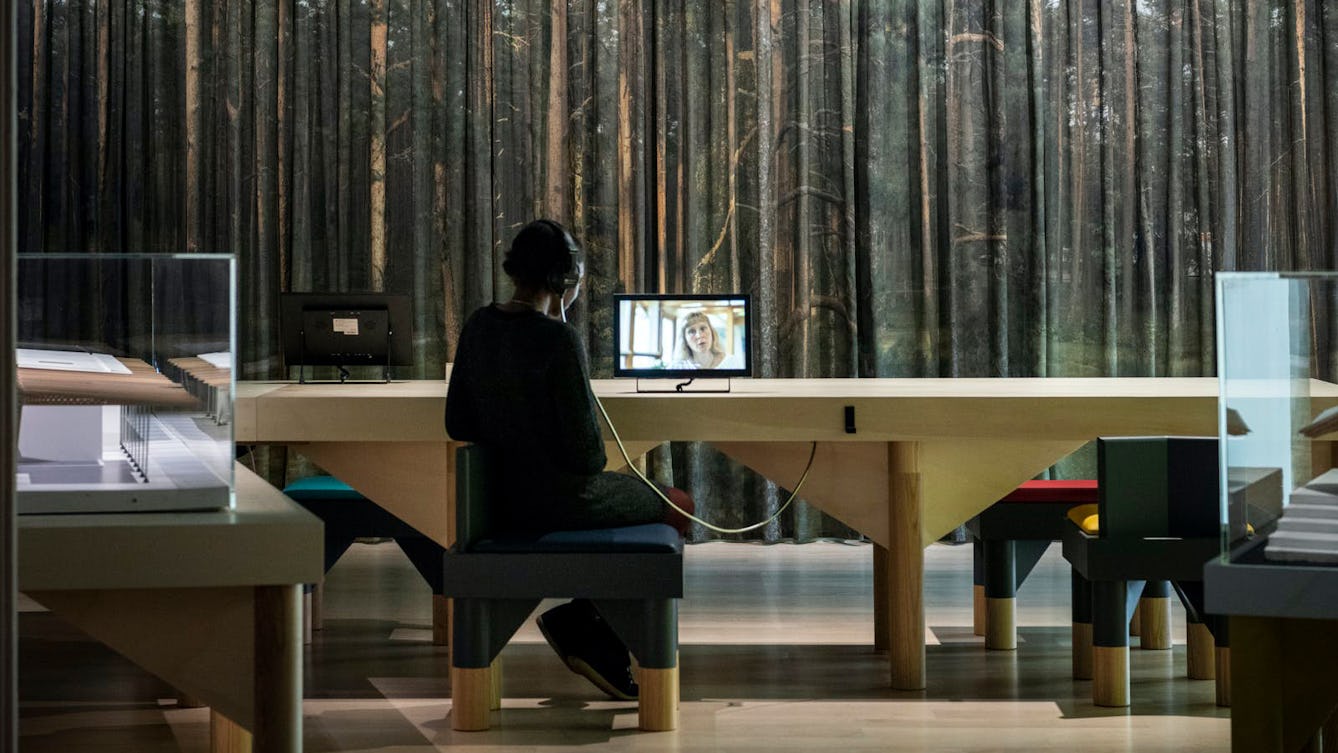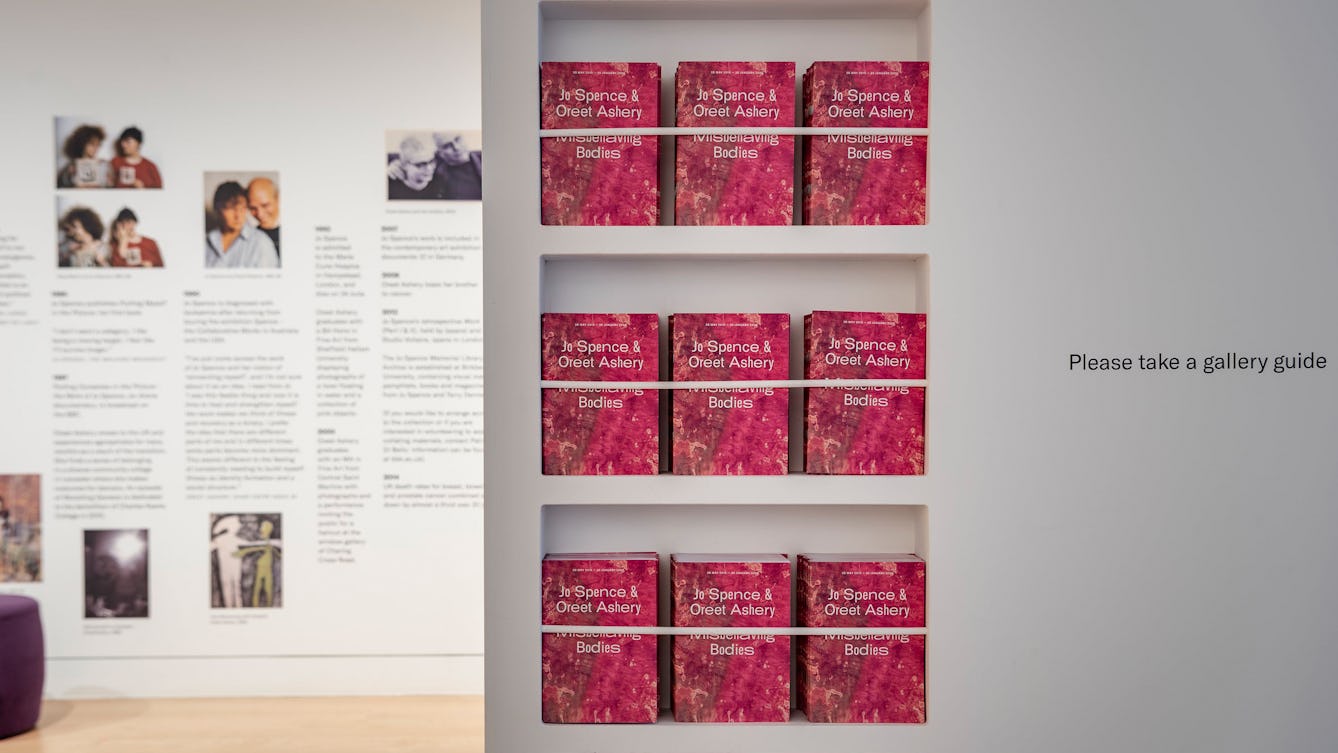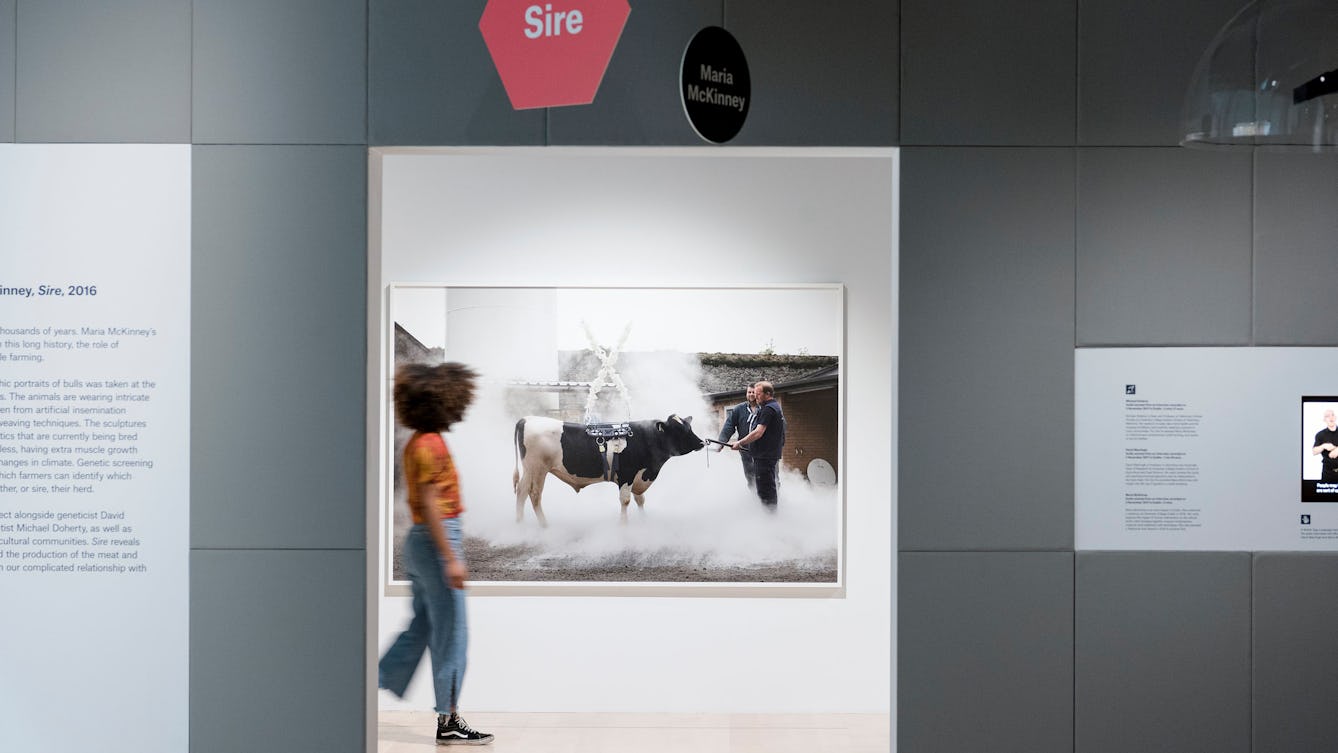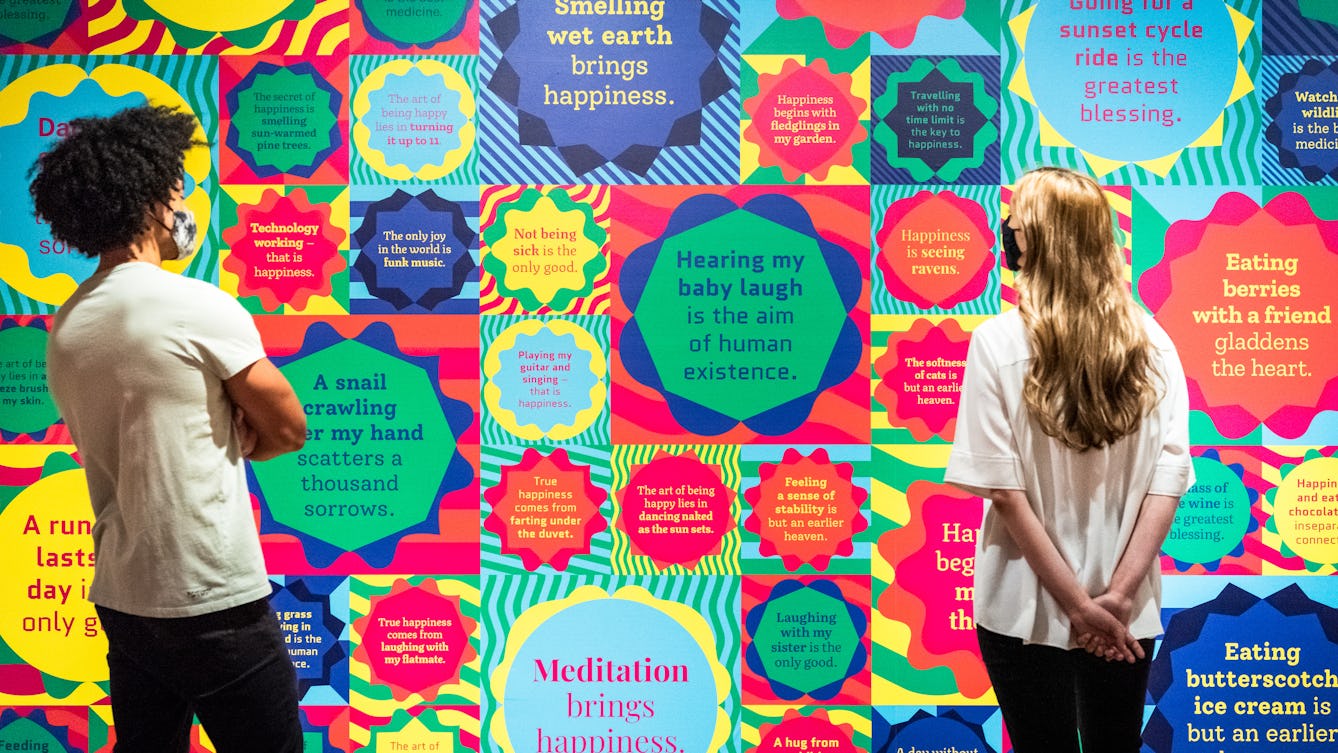Principles for lighting
Lighting design should contribute to the exhibition’s narrative, enhance each individual object and installation, and help visitors to navigate the exhibition with confidence.
We regularly exhibit objects that require low light exposure, which can sometimes be misunderstood by visitors as intentionally ‘atmospheric’ lighting design. We therefore use signage to explain the reasons to visitors (such as “This exhibition has low light levels to prevent fading and damage to light-sensitive objects”).
We aim to always test proposed case-object-label interrelationships with true samples, heights and angles under gallery lights before going fully into production on furniture and texts. We can facilitate this type of prototyping and testing in either of our temporary exhibition spaces when exhibitions are closed to the public.
